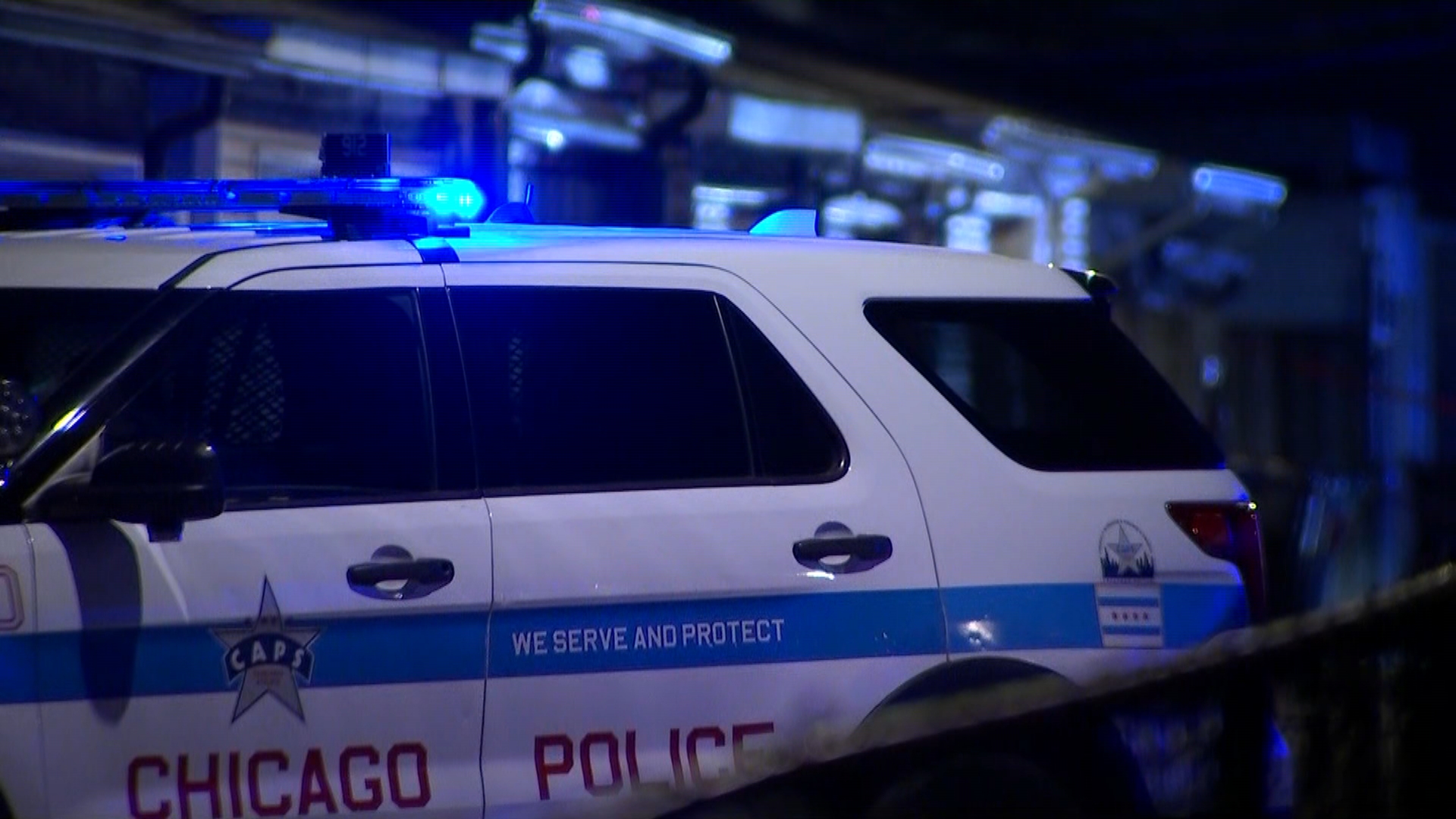Health experts say they are paying close attention to the BA.2 variant over the next few weeks as they wait to see if another COVID surge will arise.
But while many believe a rise in cases is possible, some say it is not expected to be more severe than the omicron surge seen earlier this year.
There are, however, signs in other countries currently experiencing an uptick in cases due to the variant that transmission is leading to a rise in hospitalizations and possibly even deaths.
"It is still now taking hold as the dominant variant in many countries ... Denmark, India, Philippines, UK, Switzerland, Sweden, Norway, Belgium, Hong Kong, South Africa and many more regions," said Dr. Gregory Huhn, an infectious disease physician and the COVID-19 vaccine coordinator for Cook County Health. "So particularly in the UK, where we now see that this is the dominant strain, we've seen some increased cases over the past several weeks, a doubling in the cases; we've seen increased hospitalizations and a little bit of signal for increased deaths. So with all these variants that have circulated throughout the past two years, many of the trends that start in Europe, and particularly in the UK, eventually, we see that here in the U.S. So that's why we're on heightened alert with the increase in cases of BA.2, increase in hospitalizations in the UK as an early warning signal for what could potentially occur here in the United States."
Feeling out of the loop? We'll catch you up on the Chicago news you need to know. Sign up for the weekly Chicago Catch-Up newsletter here.
The BA.2 variant, a subvariant of omicron known as "stealth omicron," a more transmissible version of the omicron variant, is beginning to grow in parts of the U.S. and is believed to be behind a number of COVID increases in multiple countries.
Already, cases have been discovered in Illinois, though the original omicron strain continues to make up a majority of the area's COVID cases.
BA.2 has several key mutations, with the most important of those occurring in the spike protein that studs the outside of the virus. Those mutations are shared with the original omicron, but BA.2 also has additional genetic changes not seen in the initial version.
Local
"There's four unique mutations in the spike protein that are distinct in BA.2, and different from BA.1. ... It seems that these mutations will propel the transmissibility to about a 30% to 50% higher degree of contagiousness than the BA.1 variant," Huhn said. "Now, this is different than the switch from delta to omicron. That truly was a much more drastic change in the virus and that's where we really saw transmissibility increase magnitudes above delta. This is more of a slight variation and so we're not seeing the transmissibility really accelerate as we did when we switched from delta to omicron."
So far, BA.2 has not yet been declared a variant of concern on its own, but it is considered one as part of the omicron variant.
"BA.2 is part of omicron," Dr. Isaac Ghinai, medical director for lab-based surveillance at the Chicago Department of Public Health, said Thursday. "Omicron is a variant of concern, therefore BA.2 is a variant of concern. Same as BA.1 is a variant of concern."
But that could change.
"People are looking very closely at whether or not BA.2 needs to be classified separately and monitored separately," Ghinai said. "But even without that, it is a variant of concern; it's being monitored very closely at the local levels, at the state levels and at the national levels."
Ghinai said he doesn't believe BA.2 will lead to a surge like the one previously seen during the omicron peak, but changes are expected "at some point."
U.S. health experts are warning BA.2 could soon lead to another uptick in domestic coronavirus cases and many are watching what happens over the next few weeks.
"I'm not expecting a big surge here, but we're gonna have to pay close attention and really be driven by data as we have throughout the whole pandemic," White House COVID-19 Response Coordinator Dr. Ashish Jha said last week.
White House chief medical advisor Dr. Anthony Fauci also said he expects "an uptick in cases" due to BA.2, but not necessarily a massive surge like other variants have caused.
"It does have increased transmission capability," Fauci said Sunday on "This Week." "However, when you look at the cases, they do not appear to be any more severe and they do not appear to evade immune responses either from vaccines or prior infections."
Huhn said experts will be closely watching as restrictions continue to loosen and some booster immunity may start to wane.
"Now that we've rolled back, you know, we'll see again in the next few weeks if there will be an uptick in cases," he said.
As most COVID-19 restrictions are relaxed across Europe, including Austria, Britain, Denmark, Germany and France, the numbers of infections have inched higher in recent days. The uptick is driven in part by BA.2 and by people largely abandoning masks and gathering in bigger groups.
In the last two weeks, COVID-19 hospitalizations and deaths have both risen slightly in Britain.
"I'm going to be honest, I am concerned about what's happening in Europe because I think there is not a full understanding of it," Chicago Department of Public Health Commissioner Dr. Allison Arwady said during a Facebook Live Thursday.
Preliminary data indicate vaccinations and boosters are similarly effective in preventing symptomatic cases of BA.1, the original omicron variant, and BA.2.
Already, the makers of the two mRNA vaccines currently approved for use in the U.S. are seeking approval for a second booster shot for certain populations.
Drugmaker Moderna asked the Food and Drug Administration on Thursday to authorize a fourth shot of its COVID-19 vaccine as a booster dose for all adults.
The request is broader than rival pharmaceutical company Pfizer's request for the regulator to approve a booster shot for all seniors.
According to Ghinai, evidence so far also suggests infection with one omicron sublineage is believed to provide protection from other omicron sublineages, but Huhn noted that reinfection is possible, though rare.
"Obviously we're watching this closely, we're concerned about it, but I have been reassured in some, you know, really good real-world studies that suggest, you know, about a 90% protection in at least the short term," Arwady said. "So, people who just recently, if they had, for example, a breakthrough infection from the original omicron, BA.1, it looks unlikely based on what we've seen in other setting that we would expect those same people to likely be particularly susceptible to BA.2."
So what will be among the first signs of a potential surge?
"If we do see an increase in cases and if we do find in the sequencing data that it's BA.2, then certainly if it goes back to that what we would consider like a high category of transmission rate - 5% or above - then I think, you know, we would be looking at another potential surge and we would have to reconsider our mitigation strategies, reconsider the masking policies," Huhn said.
According to data estimates from the Centers for Disease Control and Prevention, the variant represented 23.1% of cases from March 6 through March 12. That's up from 13.7% earlier this month.
Across much of the Midwest, however, the variant accounts for 20.5% of cases during that same time frame. In parts of the East Coast, including New York and New Jersey, the number is 39%.
"I think it's very likely that what we've seen in Europe, where BA.2 is increasing in relative proportion, is going to happen here," Ghinai said. "We're going to see BA.2 causing an increase in proportion of the number of cases. We've already seen that."
Arwady stressed that while the rise of COVID in other countries could be a sign of what's to come, it's not a guarantee.
"It is not a for sure thing, to be clear, that we will follow. We may, but there are some other countries that have gone through an omicron surge and we've not seen that resurgence yet," she said. "So we're still watching."



